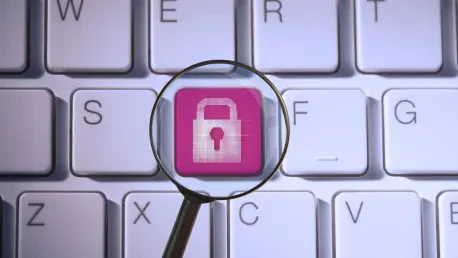In light of recent trends, encrypted messaging has transitioned from a niche communication tool to an integral part of governmental operations, driven largely by evolving privacy concerns and technological advancements. This transformation underscores how governments are striving to protect sensitive information while grappling with the complexities of maintaining public transparency. As public trust becomes increasingly pivotal, the use of encrypted messaging continues to expand, reshaping how governments interact internally and with the public.
Evolution and Adoption of Encrypted Messaging
Growth of Encrypted Communication
The adoption of encrypted messaging in government sectors has surged over recent years, reflecting an urgent need for secure communication channels. According to industry reports, the use of encrypted apps by governmental bodies has grown exponentially, with adoption rates doubling in some regions, signaling a broader commitment to fortifying information privacy. This growth aligns with a global movement toward more secure communication practices, harmonizing government processes with the expectations of a tech-savvy public.
Research from cybersecurity institutions highlights the pressing need for encryption to combat the sophisticated tactics employed by cyber adversaries. Governments are responding by integrating encrypted messaging into daily operations, promising increased security but also posing the challenge of balancing confidentiality with the imperative of public accountability.
Real-World Applications and Case Studies
Real-world applications provide vivid illustrations of encrypted messaging in action within governmental frameworks. The “Signalgate” incident, where a government official erroneously included a reporter in discussions of military importance, underscores the double-edged nature of encrypted communication. This case laid bare the unintended consequences and the high stakes of mishandling such secure platforms among officials entrusted with safeguarding national interests.
Further case studies show that local governments have also embraced encrypted solutions to conduct affairs while ensuring communication integrity. Yet, these actions prompt scrutiny over the safeguarding of such communications, especially when the transparency of governmental workings is at risk. This underscores the need for robust protocols governing the use of encrypted messaging, ensuring alignment with legal and ethical standards.
Expert Insights
Industry experts and government officials, such as Virginia’s Chief Information Security Officer, Mike Watson, have weighed in on the delicate balance between privacy and transparency. Watson emphasizes that while encryption bolsters data security, it demands an unwavering commitment to transparency when governments are challenged to uphold public trust. The discourse pivots around ensuring regulatory compliance, safeguarding public records, and maintaining transparency amid the adoption of encrypted technologies.
Experts continue to stress the importance of designing government policies that reflect the dual demands of privacy and openness in communication. This requires an intricate understanding of how existing encryption policies intersect with current and future legislative frameworks, ensuring that the right to privacy does not eclipse the mandate of transparency.
Future Perspectives and Challenges
Looking ahead, the trajectory of encrypted messaging in government operations indicates further advancements and challenges. Developments in quantum computing present both the opportunity for enhanced encryption techniques and the threat of quantum-powered attacks capable of piercing current encryption barriers. As governments brace for these emerging threats, proactive strategies must be crafted to integrate such innovations safely.
Potential challenges loom in maintaining the balance between strong encryption and the statutory need for transparency as encryption evolves alongside technological advancements. Efforts to align governmental transparency with effective data security practices will continue to shape policies and operational norms, demanding attentive navigation through these evolving technological landscapes.
Conclusion and Call to Action
In conclusion, the rise of encrypted messaging in government reflects a dynamic interplay between security imperatives and transparency mandates. While these platforms offer substantial privacy enhancements, they challenge governments to balance these benefits with public accountability standards. Moving forward, government bodies must refine their policies and practices to responsibly harness encrypted technologies, ensuring that transparency remains visible yet security uncompromised. Taking decisive action now is key to preemptively addressing the complex regulatory, ethical, and technological demands of the future landscape.









